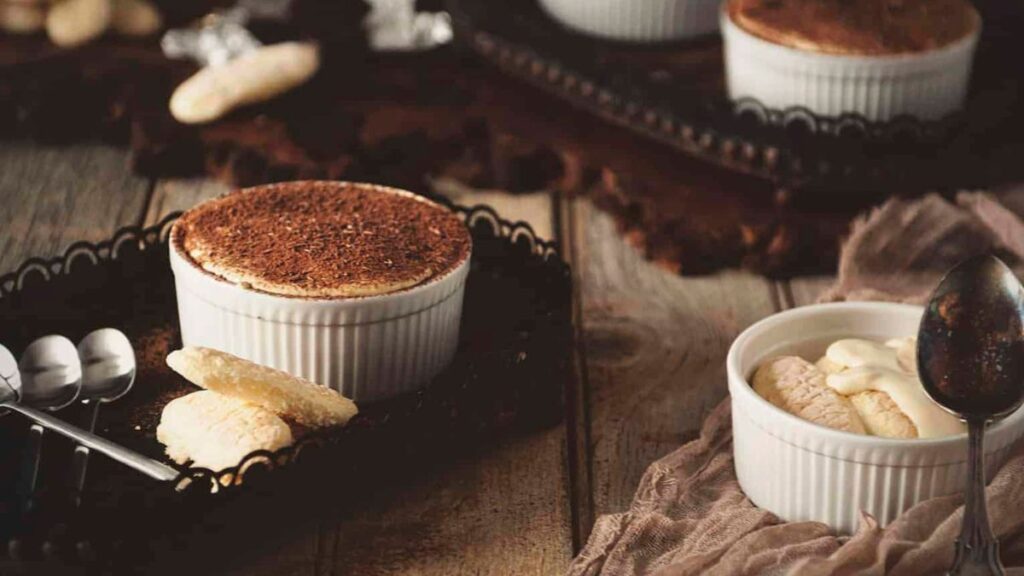Introduction to Trurimesu and Tiramisu
Desserts have a magical way of transporting us to new culinary realms. Among the vast array of sweet treats, two stand out for their creamy layers and delightful flavors: trurimesu and tiramisu. While they may seem similar at first glance, these desserts each possess unique characteristics that set them apart in the world of confections. If you’ve ever been curious about what makes trurimesu different from the classic tiramisu, you’re in for a delicious journey. Let’s dive into the rich histories, tantalizing ingredients, and cultural significance behind both of these beloved desserts!
History and Origins of Both Desserts
The roots of tiramisu trace back to the Veneto region of Italy in the 1960s. This beloved dessert emerged from a creative blend of coffee-soaked ladyfingers layered with rich mascarpone cream. The name, meaning “pick me up,” reflects its invigorating combination.
Trurimesu, on the other hand, is a modern twist that gained popularity more recently. It takes inspiration from traditional tiramisu but often incorporates alternative ingredients for a unique flavor profile. This adaptation has sparked interest among those seeking healthier or vegan options.
Both desserts share an essence grounded in Italian culinary heritage yet showcase different interpretations over time. While tiramisu stands as a classic representation of indulgence, trurimesu invites innovation and creativity into every bite. Each tells its own story through flavors and textures that captivate dessert lovers around the world.
Ingredients and Preparation Methods
Trurimesu and tiramisu share some similarities in their ingredient lists, yet each has its unique flair.
Tiramisu typically features ladyfingers soaked in coffee, layered with a rich mixture of mascarpone cheese, egg yolks, and sugar. Cocoa powder dusted on top adds the finishing touch.
On the other hand, trurimesu introduces an exciting twist. Instead of coffee-soaked ladyfingers, it often uses sponge cake infused with liqueurs like rum or limoncello. This gives it a lighter profile while retaining that creamy texture we adore in desserts.
When preparing tiramisu, patience is key. The layers need time to meld together for optimal flavor development. Trurimesu can be assembled quickly but still benefits from resting before serving.
Both desserts rely heavily on quality ingredients to achieve that luscious taste everyone craves.
Taste and Texture Comparison
When it comes to taste, trurimesu and tiramisu offer delightful yet distinct experiences. Tiramisu boasts rich layers of coffee-soaked ladyfingers, combined with a creamy mascarpone blend. The balance of espresso, cocoa powder, and sweet cream creates an indulgent flavor profile that dances on the palate.
Trurimesu takes a different path. It often incorporates lighter flavors such as fruit or nut infusions into its base. This adds a refreshing twist that contrasts with the heavier notes found in traditional tiramisu.
Texture plays a significant role too. Tiramisu is known for its velvety cream juxtaposed against soft sponge fingers—a beautiful marriage of softness and richness. Trurimesu may present more varied textures depending on its ingredients; crunchy elements like nuts can introduce satisfying bites amid smooth layers.
Both desserts are gratifying but cater to different cravings, making each one unique in its own right.
Cultural Significance
Trurimesu and tiramisu each carry a rich cultural significance within their respective traditions. Tiramisu, with its roots in Italy, symbolizes comfort and indulgence. It is often found gracing tables during family gatherings, celebrations, and holidays. This dessert embodies the Italian spirit of ‘la dolce vita,’ reminding us to savor life’s pleasures.
On the other hand, trurimesu has emerged as a modern twist on this classic favorite. While still influenced by its Italian counterpart, it embraces local flavors that resonate with contemporary palates. This adaptation showcases culinary innovation while honoring tradition.
Both desserts reflect more than just taste; they celebrate heritage and community connections through shared experiences around food. As people gather to enjoy these treats, stories are exchanged—often enhancing the emotional ties associated with them.
The popularity of both desserts highlights their roles as symbols of joy in various cultures around the world.
Variations of Trurimesu and Tiramisu
Trurimesu and tiramisu have both inspired countless creative variations around the world. Each version brings its own twist to the classic recipes.
You might encounter a fruit-infused tiramisu, where layers of mascarpone are alternated with fresh fruits like strawberries or peaches. This refreshing take adds a burst of flavor and color.
On the other hand, trurimesu often showcases unique regional ingredients. Some versions incorporate local spirits or flavored liqueurs that reflect cultural tastes.
For chocolate lovers, there’s mocha tiramisu, blending espresso with rich cocoa for an indulgent experience.
Another fun variation is matcha tiramisu, which gives this Italian dessert a Japanese flair through green tea powder layered between creamy fillings.
These adaptations highlight how versatile both desserts can be while remaining deliciously irresistible in their core essence.
Which One Should You Try?
When it comes to choosing between trurimesu and tiramisu, consider what you’re craving. If you want a twist on tradition, trurimesu might be the way to go. Its unique ingredients can provide an exciting flavor journey.
On the other hand, if classic Italian comfort is calling your name, stick with tiramisu. This beloved dessert has stood the test of time for good reason. The layers of coffee-soaked ladyfingers paired with creamy mascarpone are hard to resist.
Think about the occasion too. For a casual dinner party, either option would impress guests. But for something more adventurous or experimental, trurimesu could spark intrigue among food enthusiasts.
It’s all about personal preference and mood. Why not try both? You may discover that each has its own charm waiting to delight your taste buds in different ways.
Conclusion
When it comes to desserts, trurimesu and tiramisu each hold their own unique charm. Trurimesu offers a modern twist with its innovative approach to flavors and textures. On the other hand, traditional tiramisu stands as a beloved classic that has captured hearts worldwide.
Both desserts have fascinating histories rooted in Italian culture. While tiramisu boasts a rich legacy dating back to the 1960s, trurimesu represents a contemporary evolution of this cherished treat. Each dessert brings its own story to the table.
As you explore the ingredients and preparation methods, you’ll find distinct differences. Tiramisu’s signature layers are made from ladyfingers soaked in coffee, while trurimesu often incorporates alternate elements like fruit or different types of cake for added creativity.
The taste and texture also set them apart—tiramisu is creamy with an espresso kick; meanwhile, trurimesu may surprise your palate with unexpected fruity notes or varied textures depending on the recipe chosen.
Culturally speaking, both desserts symbolize indulgence but resonate differently across various regions. Tiramisu is synonymous with Italian family gatherings while trurimesu presents itself as an adventurous option at trendy eateries.
For those looking to try something new or craving nostalgia, both options have much to offer. Whether you’re drawn toward the familiar embrace of tiramisu or intrigued by the playful innovation found in trurimesu, there’s no wrong choice here.
Explore these delightful desserts on your next culinary adventure!





